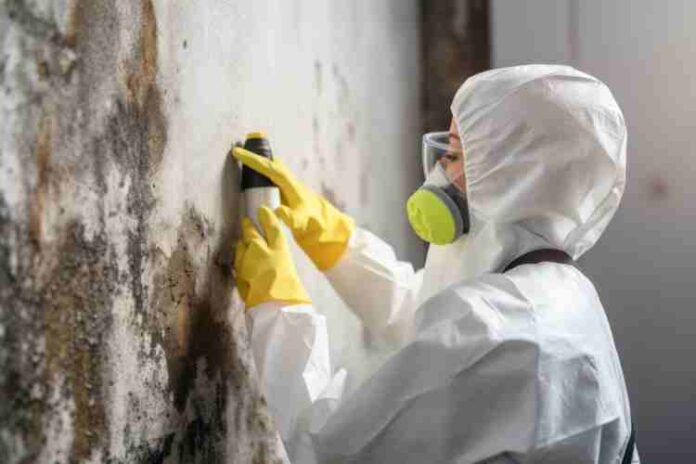Mold isn’t just an unsightly nuisance; it’s a silent saboteur in commercial buildings. While many consider it a minor issue, its impact goes far beyond aesthetic concerns. In commercial spaces, mold jeopardizes not only the health of employees and customers but also the building’s structural integrity. In this article, we’ll explore the risks associated with mold in commercial settings and provide practical solutions for prevention and treatment.
The Risks Of Molds
Grasping the hazards linked to mold is essential for the well-being of your enterprise and its occupants.
- Health Risks
Mold can trigger a range of health problems, most notably allergies and respiratory ailments. Exposure to mold spores may lead to sneezing, itching, and wheezing, severely affecting the well-being of those who frequent the building. The health of both employees and patrons is jeopardized, leading to lower productivity and possible loss of business.
- Structural Risks
Over time, mold infestation can weaken the integrity of building materials. It can infiltrate porous substances like wood and drywall, ultimately causing them to decay. This degradation could result in substantial structural issues that compromise the safety of the establishment.
- Financial Risks
The financial burden of combating mold is far from negligible. Eradication efforts can be expensive, often requiring specialized treatment. Furthermore, businesses risk facing legal action or regulatory fines if mold is found to violate health codes. This can result in both immediate expenses and long-term financial repercussions.
By understanding these risks, you can appreciate the urgency of addressing mold concerns in commercial settings.
Identifying Molds
Knowledge is your first defense against mold; spotting it early can save you time and money down the line.
- Visual Inspection
Frequently check areas prone to moisture accumulation, such as bathrooms, kitchens, and basements. Mold often appears as discolored spots, which can be black, green, or even orange. Its texture may range from fuzzy to slimy. If you’re located in Southern California, you might consider taking advantage of a free mold inspection in Los Angeles County to get a professional opinion.
- Professional Assessment
If you notice persistent mold despite your efforts, or if it’s in a large area, it’s time to consult an expert. Professionals usually conduct a thorough inspection, often using specialized equipment to detect mold behind walls or in other hidden places. They may also take samples for lab testing to identify the mold type and concentration.
Spotting mold early is a crucial step in managing the problem before it escalates.
Common Causes Of Molds
Identifying the root causes of mold is the first step in effective prevention. Here are some of the most common causes:
- Poor Ventilation
Insufficient airflow can create an ideal environment for mold to flourish. Areas like basements, storage rooms, and poorly ventilated bathrooms are particularly susceptible to mold growth. Encouraging proper airflow through fans or HVAC systems can make a significant difference.
- Water Leaks
Leaks are a prime source of moisture, creating the perfect breeding ground for mold. Whether it’s a leaking roof or faulty plumbing, water accumulation is a serious issue. To catch this problem early, routine inspections for leaks in vulnerable areas are recommended.
- High Humidity
Elevated humidity levels can also accelerate mold development. Places such as kitchens or indoor pools are more prone to high moisture levels. Utilizing dehumidifiers and monitoring humidity with hygrometers can help keep the environment less hospitable for mold.
You can take proactive steps to prevent mold from becoming a major issue in your commercial building by recognizing and addressing these common causes.
Solutions For Molds
Armed with the knowledge of what causes mold and how to identify it, let’s discuss effective countermeasures.
- Immediate Actions
The moment you spot mold, quick intervention is essential. Start by drying out water-damaged areas using fans or dehumidifiers. Next, remove materials that show signs of mold, such as carpets, ceiling tiles, or drywall, for proper cleaning or disposal.
- Long-Term Solutions
For lasting mold prevention, tackle ventilation first. Install exhaust fans in moisture-heavy zones like kitchens and bathrooms. Consistent HVAC maintenance also keeps air flowing, reducing mold risks.
Next, institute quarterly building inspections. Focus on spots prone to moisture, watching for leaks and early mold signs. Regular checks nip problems in the bud.
Lastly, control humidity. Place dehumidifiers in high-moisture areas and use hygrometers for monitoring. Keep humidity levels between 30% and 50%.
Integrating these steps creates a solid line of defense against mold, keeping your building safer and healthier.
Conclusion
Mold in commercial buildings is more than just an unsightly issue; it’s a serious concern that poses health risks, compromises structural integrity, and brings financial burdens. But the good news is that mold can be managed and even prevented.
From identifying common causes to taking immediate actions and planning long-term strategies, you hold the power to protect your building and its occupants. Don’t wait for mold to become a major problem; take action today to maintain a healthier, safer, and more productive environment.


